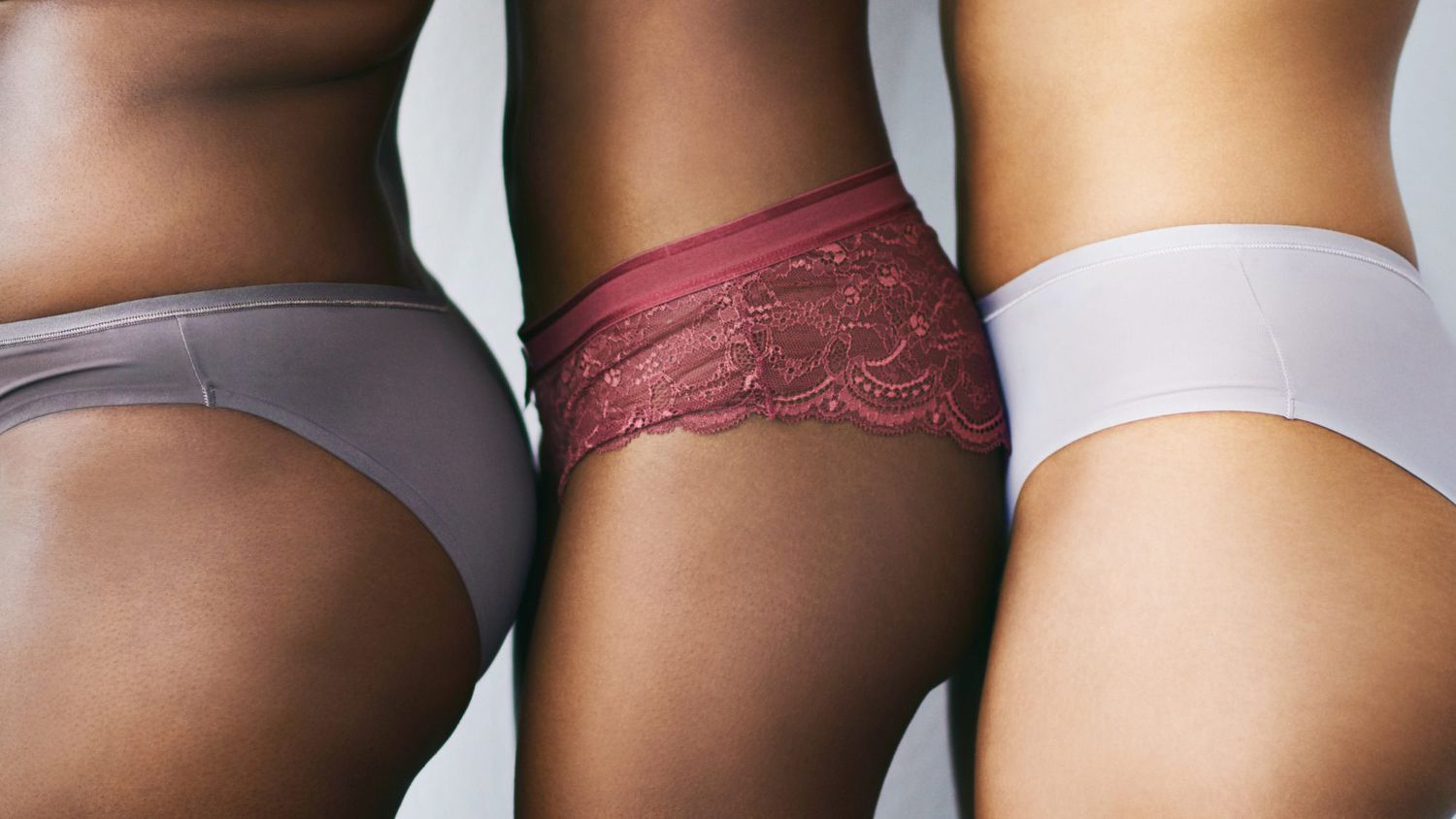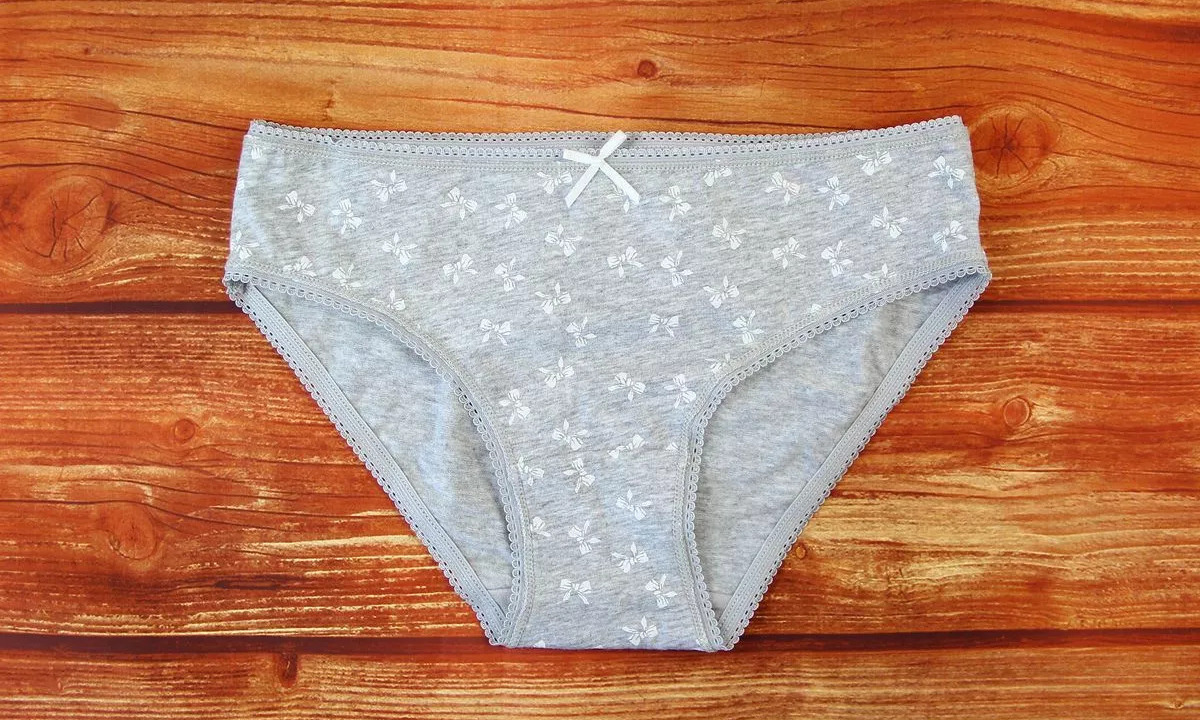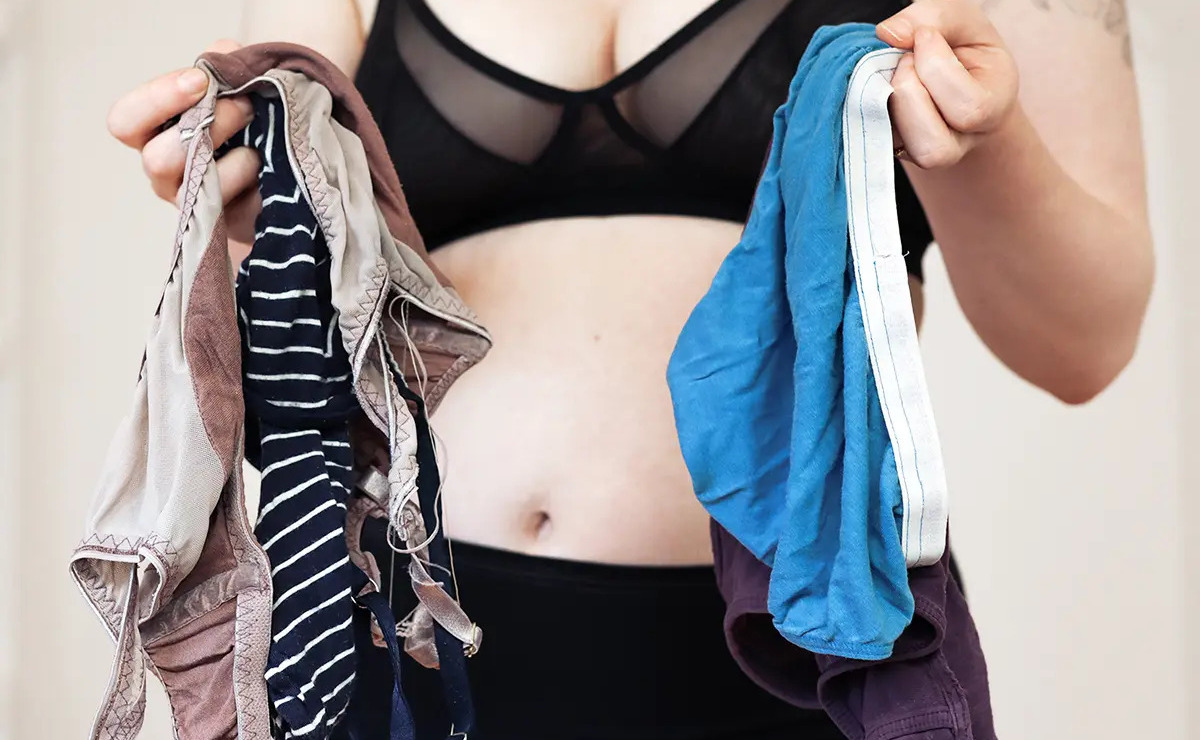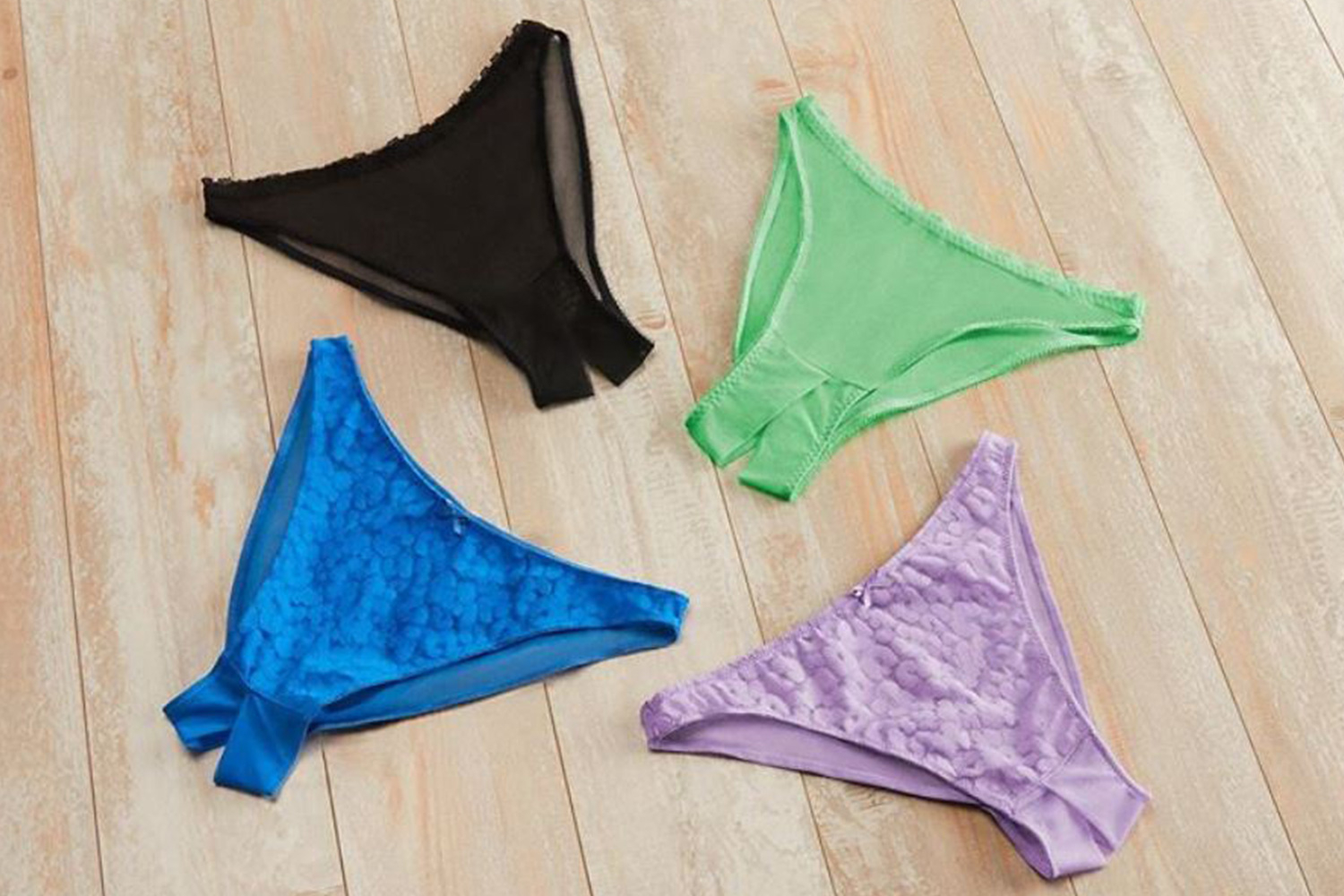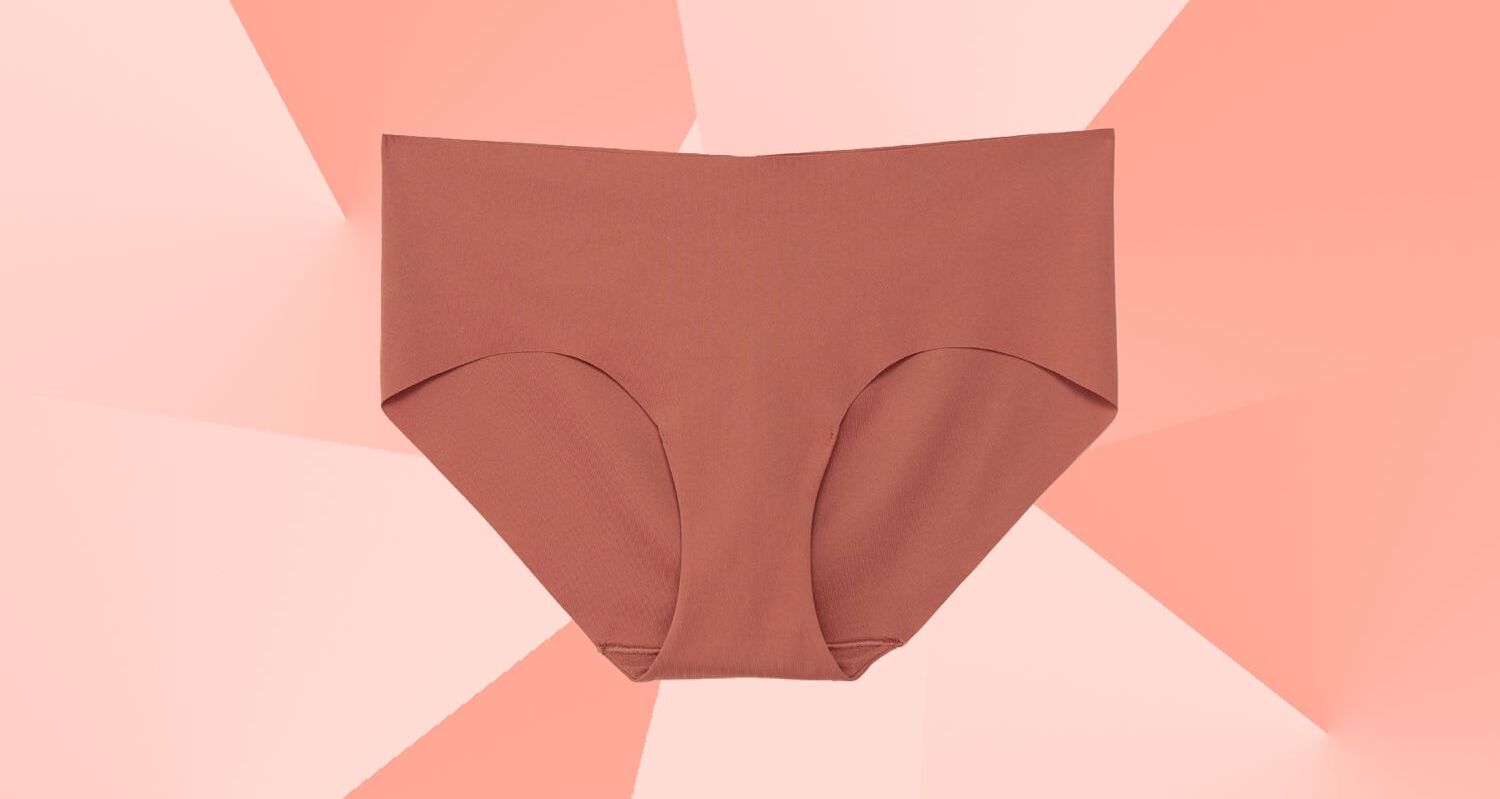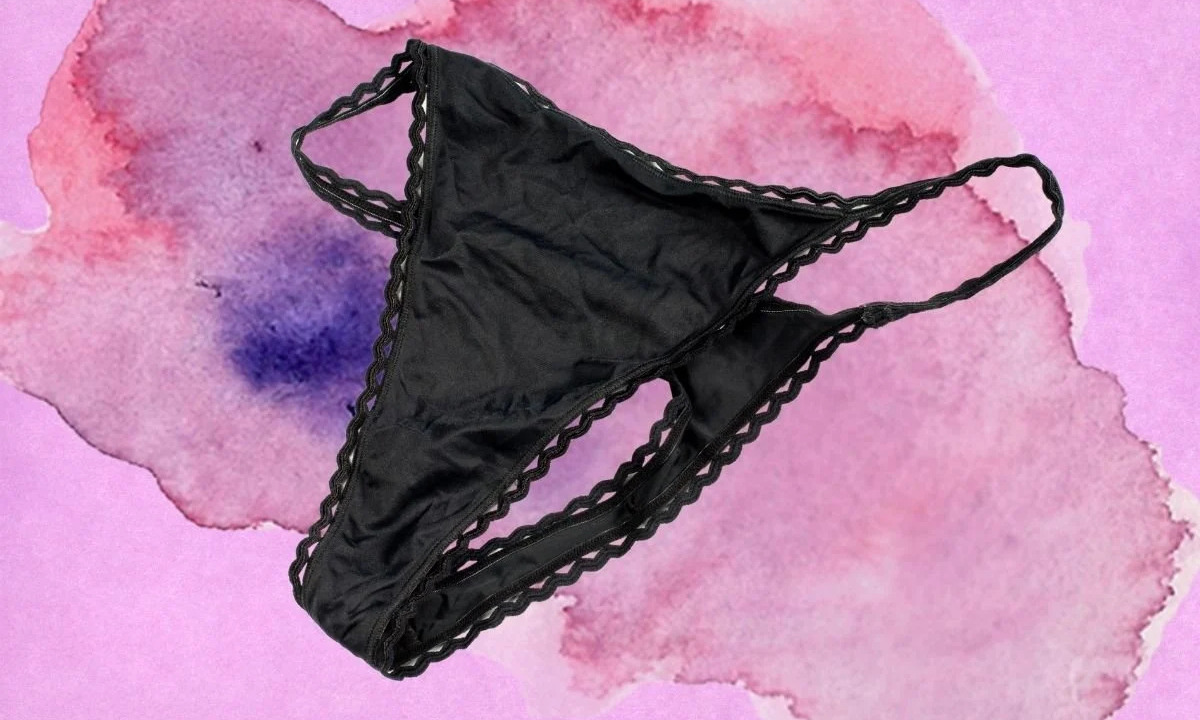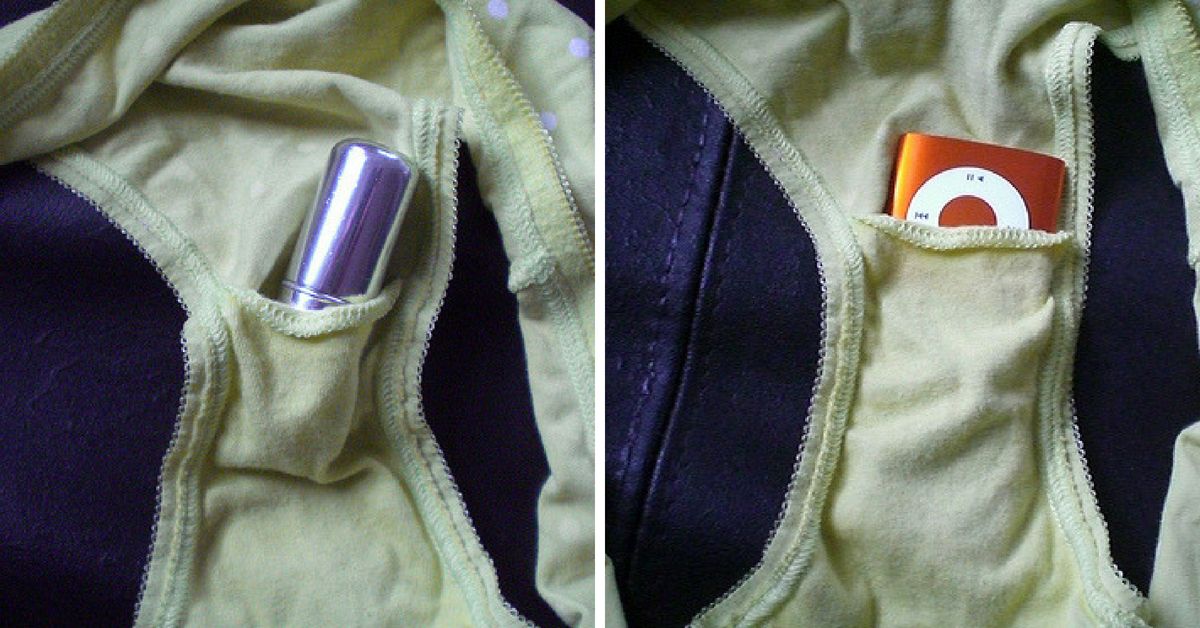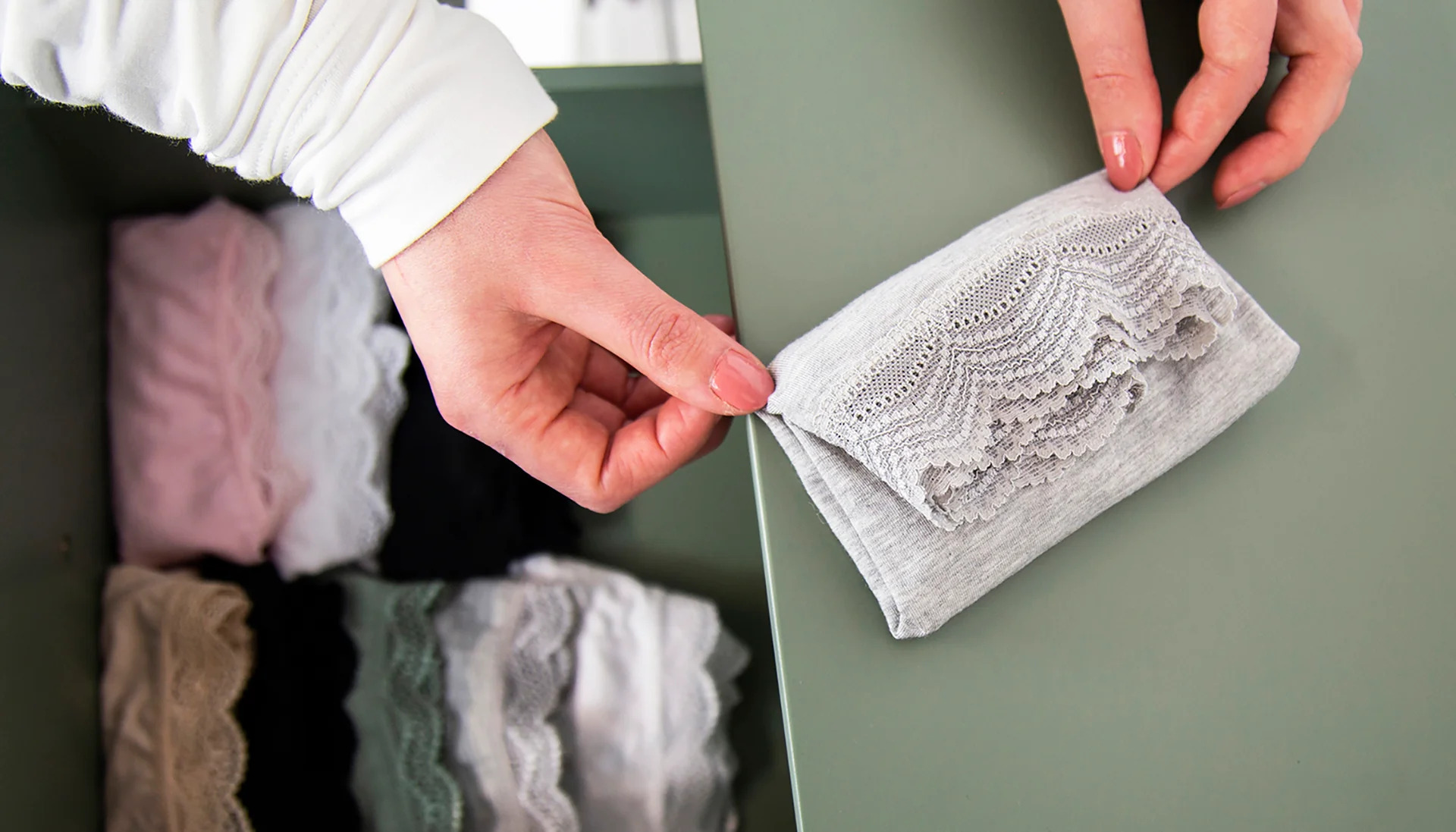

FAQs
Why Do Panties Roll Down
Published: July 31, 2023
Discover the reasons behind why panties roll down and find answers to your general questions about this common issue.
(Many of the links in this article redirect to a specific reviewed product. Your purchase of these products through affiliate links helps to generate commission for Under-tec.com, at no extra cost. Learn more)
Table of Contents
- Introduction
- Understanding Panties Rolling Down
- Common Causes of Panty Rolling
- Ill-Fitting Underwear
- Stretchy Waistbands
- Fabric Choice
- Weight Fluctuations
- Lack of Elasticity
- Activities and Movements
- Solutions to Prevent Panty Rolling
- Choosing the Right Size
- Investing in Quality Brands
- Opting for Specific Styles
- Trying Different Fabrics
- Maintaining Proper Elasticity
- Conclusion
Introduction
Have you ever experienced the frustrating moment when your panties start rolling down? It can be incredibly inconvenient and uncomfortable, causing you to constantly adjust them throughout the day. But why does this happen? Is there a way to prevent it?
Panty rolling occurs when the elastic waistband of your underwear fails to stay in place, causing it to gradually slide down your hips. This can be caused by various factors such as ill-fitting underwear, stretchy waistbands, fabric choice, weight fluctuations, lack of elasticity, and specific activities or movements.
In this article, we will dive into the reasons behind panty rolling and explore some practical solutions to prevent it from happening. Understanding the underlying causes will help you make informed choices when selecting your underwear and ensure a comfortable and hassle-free experience.
So, if you’re tired of constantly pulling up your panties or feeling uncomfortable throughout the day, read on to discover the reasons behind panty rolling and how you can tackle this irritating issue.
Understanding Panties Rolling Down
Panties rolling down can be frustrating and perplexing, but understanding the mechanics behind it can help alleviate the problem. The primary culprit is the elastic waistband that is designed to keep your underwear in place. When this elastic loses its grip or is compromised in any way, the panties can start to roll down.
The rolling usually starts subtly, with the waistband gradually slipping down your hips. You may first notice a slight discomfort or a feeling of looseness. As time goes on, the panties may roll down further, leading to constant readjustment and potential embarrassment.
One reason for this phenomenon is ill-fitting underwear. If your panties are too large for your body, the waistband will not have enough tension to stay in place. Conversely, if your underwear is too tight, the pressure can cause the elastic to stretch and lose its grip over time.
Another factor that contributes to panty rolling is the type of waistband used. Some panties have stretchy waistbands that provide a comfortable fit but may not have enough elasticity to stay put. These waistbands can easily lose their shape and cause the panties to roll down.
The fabric choice also plays a role in panty rolling. Some fabrics have a higher tendency to slip against the skin or not provide enough grip for the elastic waistband. For example, silky or satin fabrics may be more prone to sliding down compared to cotton or microfiber materials.
Weight fluctuations can also contribute to the rolling of panties. When you gain or lose weight, your body shape changes, and this directly affects how your underwear fits. If your panties were once perfectly snug but now feel loose or tight, the elastic may not be able to maintain its grip, leading to rolling.
Furthermore, as panties age, the elastic can lose its elasticity. Continuous washing and wearing can degrade the elastic fibers over time, causing it to become less resistant and prone to rolling. Insufficient elasticity in the waistband can lead to constant slipping and adjusting throughout the day.
Lastly, certain activities or movements can exacerbate panty rolling. Whether it’s vigorous exercise, bending over repeatedly, or simply sitting for extended periods, these actions can put additional strain on the waistband, causing it to lose its grip.
By understanding the various factors contributing to panty rolling, you can take targeted steps to prevent this issue from occurring. The next section will explore practical solutions to keep your panties in place and ensure your comfort and confidence throughout the day.
Common Causes of Panty Rolling
Panty rolling is an issue that many people face, and it can be caused by several common factors. Understanding these causes can help you address the problem and find solutions that work for you.
1. Ill-Fitting Underwear: One of the primary causes of panty rolling is wearing underwear that doesn’t fit properly. If your underwear is too loose, the elastic waistband won’t have enough tension to keep it in place. Conversely, if your underwear is too tight, the pressure can cause the waistband to stretch and lose its elasticity over time.
2. Stretchy Waistbands: Some panties come with stretchy waistbands that offer comfort and flexibility. However, these waistbands may lack the necessary elasticity to stay in place, especially if they are worn for extended periods or if the panties are constantly pulled up and down. The continuous stretching and relaxation of the waistband can cause it to lose its shape and roll down.
3. Fabric Choice: The type of fabric used in your panties can also contribute to rolling. Fabrics with a smooth and slippery texture, such as satin or silk, have a higher tendency to slide against the skin, making it easier for the waistband to lose its grip and roll down. Opting for panties made of cotton or microfiber can provide more friction, helping the elastic stay in place.
4. Weight Fluctuations: Changes in weight can impact the fit of your underwear. If you’ve gained or lost weight, your body shape and size may have changed, causing your panties to fit differently. This change in fit can affect the tension of the elastic waistband, leading to rolling.
5. Lack of Elasticity: Over time, the elastic in your panties can lose its elasticity due to frequent washing and wearing. The continuous stretching and contracting weaken the fibers, making the waistband less resistant to rolling. This is particularly true for older or worn-out panties.
6. Activities and Movements: Certain activities and movements can exacerbate panty rolling. Vigorous exercises, repetitive bending, or sitting for long periods can put strain on the waistband, causing it to lose its grip. If you engage in such activities frequently, you may experience increased rolling of your panties.
Understanding these common causes of panty rolling is crucial in finding effective solutions. In the next section, we will explore practical strategies to prevent panties from rolling down and maintain a comfortable fit all day long.
Ill-Fitting Underwear
One of the primary causes of panty rolling is wearing ill-fitting underwear. When your panties are not the right size for your body, it can lead to discomfort and a higher likelihood of the waistband rolling down. Understanding the importance of choosing the correct size and fit can help you avoid this issue.
1. Too Loose: If your underwear is too loose, the elastic waistband will lack the necessary tension to stay in place. This can happen if you’ve recently lost weight, your panties have stretched out over time, or you purchased underwear with a larger size. When the elastic doesn’t have enough grip, it can easily slide down your hips, causing the panties to roll down as well.
2. Too Tight: On the other hand, underwear that is too tight can also contribute to panty rolling. The pressure from overly tight panties can cause the elastic waistband to stretch and lose its elasticity. This can result in a constant need to readjust your underwear throughout the day, as the rolling becomes more apparent. If your panties leave red marks or cause discomfort, it’s a sign that they are too tight and may contribute to rolling.
3. Body Changes: Our bodies are not static; they change over time. Weight fluctuations and body shape variations can impact the fit of your underwear. If you’ve experienced weight gain or loss, or if your body shape has changed due to pregnancy or aging, your previous well-fitting panties may no longer provide the same level of comfort. The elastic waistband may not have enough tension to keep your underwear in place, leading to rolling.
4. Measuring and Fitting: To ensure a proper fit, it’s essential to measure yourself and refer to size charts provided by underwear brands. Taking accurate measurements of your waist and hips can help you determine the appropriate size for your body. Keep in mind that different brands may have slightly different sizing, so always consult the specific brand’s guidelines. Trying on different sizes and styles can help you find the perfect fit that avoids panty rolling.
5. Professional Fittings: If you’re unsure about your correct underwear size or fit, consider getting professionally fitted. Many lingerie stores offer fitting services where experts can measure you and provide recommendations based on your body shape and preferences. This personalized fitting experience can help you find underwear that fits snugly without being too tight and minimizes the risk of rolling.
Choosing the right size and fit for your underwear is crucial in preventing panty rolling. By ensuring that your panties have the proper tension and hug your body comfortably, you can significantly reduce the likelihood of the waistband rolling down throughout the day.
Stretchy Waistbands
Stretchy waistbands are commonly found in many types of underwear and are often praised for their comfort and flexibility. However, these elastic waistbands can sometimes contribute to the problem of panty rolling. Understanding the characteristics of stretchy waistbands and how they can affect the fit of your underwear will help you make informed choices to prevent rolling.
1. Elasticity and Tension: Stretchy waistbands are designed to provide a snug yet comfortable fit around your waist. The elasticity allows the waistband to expand and contract as you move, providing flexibility and accommodating different body shapes. However, the tension of the elastic is crucial in keeping the waistband in place. If the tension becomes compromised due to overstretching or wear and tear, the waistband may lose its grip, resulting in panty rolling.
2. Continuous Stretching and Relaxing: When you wear underwear with stretchy waistbands, the elastic is subjected to continuous stretching and relaxing as you move throughout the day. This repeated stretching can gradually weaken the elastic fibers over time, causing them to lose their original shape and elasticity. As the elastic loses its tension, the waistband has a higher chance of rolling down.
3. Extended Wear and Activity: Extended wear and engaging in activities that involve a lot of movement can put additional strain on stretchy waistbands, making them more prone to rolling. If you wear the same pair of underwear for an extended period, the constant stretching and movement can cause the elastic to lose its grip. Similarly, engaging in activities such as exercise, running, or bending repeatedly can exacerbate the rolling of the waistband.
4. Choosing the Right Elastic Quality: When purchasing underwear with stretchy waistbands, it’s essential to consider the quality of the elastic used. Look for underwear brands that use durable and well-constructed elastic. High-quality elastic will maintain its tension and shape even after multiple wears and washes, reducing the likelihood of panty rolling. Reading customer reviews and researching the reputation of the brand can help you make informed choices.
5. Regular Replacement: To prevent rolling due to deteriorating elastic, it’s crucial to regularly replace your underwear. As a general guideline, consider replacing your underwear every six months to a year, depending on the frequency of wear and the quality of the elastic. Regularly refreshing your underwear collection will ensure you have garments with well-functioning elastic waistbands that stay in place throughout the day.
While stretchy waistbands offer comfort and flexibility, they can sometimes contribute to panty rolling. By paying attention to the quality of the elastic, replacing your underwear regularly, and being mindful of the activities you engage in, you can reduce the risk of rolling and enjoy comfortable, well-fitting underwear.
Fabric Choice
The choice of fabric plays a significant role in the comfort and performance of your underwear, including its ability to stay in place without rolling down. Different fabrics have varying textures, friction levels, and stretch properties that can affect how well the waistband stays in position. Understanding the impact of fabric choice on panty rolling can help you make informed decisions when selecting your underwear.
1. Silk or Satin: Fabrics such as silk or satin have a smooth and slippery texture which can easily glide against the skin. While these fabrics may feel luxurious, they can contribute to panty rolling. The lack of friction can make it easier for the waistband to lose its grip, leading to the rolling down of the panties throughout the day.
2. Cotton: Cotton is a popular fabric choice for underwear due to its breathability, absorbency, and softness. Cotton panties tend to provide more friction against the skin, resulting in better grip for the elastic waistband. The increased friction can help the waistband stay in place, reducing the likelihood of panty rolling.
3. Microfiber: Microfiber is another fabric commonly used in modern underwear. It is known for its smooth and stretchy characteristics. Microfiber panties can provide a good balance between comfort and grip. The fabric has enough friction to prevent excessive sliding while still offering a soft and comfortable feel against the skin.
4. Blends: Many underwear brands use fabric blends that combine different materials to optimize comfort and performance. For example, a blend of cotton and elastane can provide both softness and elasticity, ensuring a comfortable fit with less chance of rolling. Blends with polyester or nylon can offer stretch and durability, reducing the likelihood of the waistband losing its grip.
5. Consider Personal Preferences: While certain fabrics may have a higher tendency to cause panty rolling, it’s essential to consider personal preferences. Some individuals may prioritize comfort and are willing to accept a slightly higher chance of rolling, while others may prioritize a secure fit. Experimenting with different fabric options and considering your unique needs can help you find the right balance between comfort and functionality.
When choosing underwear, consider the fabric composition and its potential impact on panty rolling. Opting for fabrics that offer a good balance of comfort, friction, and stretch can help ensure that your waistband stays in place throughout the day, preventing inconvenient rolling.
Weight Fluctuations
Weight fluctuations can have a significant impact on the fit and comfort of your underwear. Changes in weight can lead to alterations in body shape and size, which directly affect how your underwear fits. Understanding the relationship between weight fluctuations and panty rolling can help you find suitable solutions to address this issue.
1. Weight Gain: When you gain weight, your body shape and size change. This increase in body mass can cause your underwear to fit differently than before. If your panties were once snug and well-fitting, the added weight may stretch out the waistband, reducing its ability to hold the panties in place. As a result, the waistband may start to roll down, requiring constant adjustment throughout the day.
2. Weight Loss: Conversely, weight loss can also affect the fit of your underwear. As you shed pounds, your body shape and size may become smaller. This change in body composition can lead to looser-fitting underwear, especially if you haven’t adjusted your underwear size accordingly. Loose underwear provides less tension on the waistband, making it more prone to rolling down.
3. Transitional Period: During weight fluctuations, you may go through a transitional period where your old underwear no longer fits properly, but your new size hasn’t been established yet. It’s essential to reassess your underwear size periodically, especially during significant weight changes. Wearing underwear that no longer fits well increases the likelihood of panty rolling.
4. Solutions: To address panty rolling caused by weight fluctuations, consider the following solutions:
- Regularly evaluate your underwear size and fit to ensure it matches your current body shape.
- Invest in adjustable or stretchy underwear that can accommodate slight weight changes.
- During weight loss or gain, consider purchasing interim underwear to bridge the size gap until your new size stabilizes.
- Consult with a professional fitter who can assist you in finding the right underwear size during transitional periods.
- Choose underwear styles with secure waistbands, such as high-waisted or boyshort styles, which can offer better coverage and reduce the likelihood of rolling.
Managing panty rolling caused by weight fluctuations involves regularly assessing your underwear size, adjusting as necessary, and investing in well-fitting garments. By addressing changes in body shape and size, you can ensure a comfortable and secure fit, minimizing the chance of your panties rolling down.
Lack of Elasticity
The lack of elasticity in the waistband of your underwear can contribute to the frustrating issue of panty rolling. Elasticity is a crucial characteristic that allows the waistband to maintain its tension and keep your panties in place. Understanding the causes and solutions for the lack of elasticity can help you address this problem effectively.
1. Wear and Tear: Over time, the elastic in the waistband can become worn out and lose its elasticity. Continuous washing, stretching, and wearing can weaken the elastic fibers, causing them to become less resistant. The lack of elasticity makes it easier for the waistband to stretch out and roll down, leading to constant adjustment throughout the day.
2. Low-Quality Elastic: The quality of the elastic used in underwear can vary significantly across different brands and styles. Lower-quality elastic may lack durability and lose its elasticity more quickly. When shopping for underwear, look for reputable brands that prioritize high-quality materials to ensure the longevity of the elastic and minimize the risk of panty rolling.
3. Harsh Washing Practices: How you care for your underwear can also impact the elasticity of the waistband. Harsh washing practices, such as using hot water, a rough scrubbing motion, or high heat in the dryer, can degrade the elastic fibers over time. To maintain the elasticity of your underwear, opt for gentle washing methods, including using cold water, delicate cycles, and air-drying.
4. Solving the Lack of Elasticity: To address panty rolling caused by the lack of elasticity, consider the following solutions:
- Invest in underwear from reputable brands known for their high-quality elastic materials.
- Read customer reviews or seek recommendations to ensure the durability and elasticity of the waistband.
- Follow recommended washing and drying instructions to maintain the elasticity of the elastic waistband.
- Avoid overstretching the elastic when putting on or taking off your underwear to prevent unnecessary wear.
- Periodically assess the condition of your underwear, replacing pairs that show signs of significant elastic wear and lack of elasticity.
Addressing the lack of elasticity in the waistband of your underwear is essential to prevent panty rolling. By choosing underwear with high-quality elastic, practicing proper care, and periodically evaluating the condition of your underwear, you can enjoy a secure and comfortable fit throughout the day.
Activities and Movements
Engaging in certain activities and movements can exacerbate the issue of panty rolling. The strain and constant friction placed on the waistband during these activities can cause it to lose its grip and gradually roll down. Understanding the impact of activities and movements on panty rolling can help you find strategies to prevent this issue.
1. Vigorous Exercise: Participating in activities such as running, jumping, or intense workouts can put significant strain on the elastic waistband. The constant movement and high impact can cause the waistband to stretch and lose its grip over time. Consider opting for specific sports underwear that is designed with more secure waistbands and added support to minimize rolling during exercise.
2. Repeated Bending and Flexing: Activities that involve repeated bending, flexing, or twisting of the body can also contribute to panty rolling. For example, if your job involves a lot of bending over or if you engage in activities like yoga or Pilates, the repeated strain on the waistband can gradually cause it to lose its grip and roll down. Be mindful of the movements you perform and consider wearing underwear styles with more coverage and secure waistbands to minimize rolling during such activities.
3. Sitting for Extended Periods: Sitting for long periods can also lead to panty rolling. The constant pressure and friction against the chair can cause the waistband to gradually slide down. If you have a job that requires prolonged sitting, consider taking regular breaks to readjust your underwear and prevent excessive rolling. High-waisted or boyshort-style underwear can provide more coverage and better stay in place during prolonged sitting.
4. Sudden Movements: Quick and abrupt movements can also contribute to panty rolling. Activities such as dancing, jumping, or quickly changing positions can put strain on the waistband, causing it to lose its grip. If you frequently engage in such activities, opt for underwear with secure waistbands designed for active wear to minimize the risk of rolling.
5. Solutions: To prevent panty rolling during various activities and movements, consider the following solutions:
- Invest in specific sports or active wear underwear with secure waistbands and added support.
- Choose underwear styles with more coverage, such as high-waisted or boyshorts, for better stability during movements.
- Take regular breaks during extended periods of sitting to reposition your underwear and reduce rolling.
- Be mindful of sudden and vigorous movements, allowing yourself time to adjust your underwear if needed.
- Experiment with different underwear styles and brands to find the ones that offer the most secure fit during your specific activities.
By understanding the impact of activities and movements on panty rolling and implementing suitable strategies, you can minimize rolling and ensure a comfortable fit regardless of the physical demands of your day.
Solutions to Prevent Panty Rolling
Dealing with panty rolling can be frustrating, but there are several practical solutions available to help prevent this issue. By implementing these strategies, you can ensure a comfortable and hassle-free experience with your underwear.
1. Choosing the Right Size: Ensuring that you are wearing the correct size of underwear is crucial in preventing panty rolling. Take accurate measurements of your waist and hips, and refer to size charts provided by the underwear brand to find the best fit for your body. Remember that sizes can vary between brands, so always consult the specific brand’s guidelines.
2. Investing in Quality Brands: Quality matters when it comes to the durability and performance of your underwear. Opt for reputable brands known for their high-quality materials and craftsmanship. These brands often prioritize the use of elastic that maintains its tension and shape over time, reducing the risk of panty rolling.
3. Opting for Specific Styles: Different underwear styles offer varying levels of coverage and waistband security. High-waisted or boyshort styles provide more coverage and a secure fit, minimizing the chance of rolling. Experiment with different styles to find the ones that offer the most comfortable and stable fit for your body and activities.
4. Trying Different Fabrics: Fabric choice can also play a role in preventing panty rolling. Fabrics with more friction, such as cotton or microfiber, can provide better grip against the skin and help the waistband stay in place. Consider trying different fabric options to find the ones that offer the most secure fit and help prevent rolling.
5. Maintaining Proper Elasticity: Proper care of your underwear is essential for maintaining the elasticity of the waistband. Follow the washing and drying instructions provided by the manufacturer, as harsh washing practices can degrade the elastic over time. Gentle washing methods and air-drying can help preserve the elasticity and prevent premature rolling.
6. Regular Replacement: Over time, elastic waistbands naturally lose their elasticity due to wear and tear. It’s important to regularly evaluate the condition of your underwear and replace pairs that show signs of significant elastic wear. As a general guideline, consider replacing your underwear every six months to a year, depending on the frequency of wear and the quality of the elastic.
7. Personalized Solutions: Every individual’s body and preferences are unique, so it’s essential to find personalized solutions that work for you. Pay attention to how specific styles, fabrics, and brands affect your comfort and the occurrence of panty rolling. Explore different options and make adjustments accordingly.
By implementing these solutions, you can significantly reduce the occurrence of panty rolling and enjoy a comfortable and secure fit throughout the day. Remember to prioritize your comfort and find the strategies that work best for your body and lifestyle.
Choosing the Right Size
Choosing the right size of underwear is paramount in preventing panty rolling. Wearing underwear that is too small or too large can lead to discomfort and a higher chance of the waistband rolling down. Taking the time to measure yourself accurately and find the perfect fit can make all the difference in ensuring a comfortable and secure experience.
1. Taking Accurate Measurements: To determine your correct underwear size, start by taking accurate measurements of your waist and hips. Use a measuring tape and wrap it around the narrowest part of your waist and the fullest part of your hips. Round the measurements to the nearest half-inch or centimeter. Compare your measurements to the size chart provided by the underwear brand to find your corresponding size.
2. Referring to Size Charts: Each underwear brand has its own size chart, so it’s essential to refer to the specific brand’s guidelines. Sizing can vary between brands, so be sure to check the measurements recommended for each size. Pay attention to both your waist and hip measurements, as some brands may prioritize one over the other when determining size.
3. Evaluating the Fit: When trying on underwear, focus on how it fits your body. The waistband should sit comfortably on your waist or hips without digging in or feeling too loose. The panties should hug your body, providing a snug yet comfortable fit. If the waistband feels too tight and leaves red marks on your skin, the size may be too small. On the other hand, if the waistband feels loose and has no tension, the size may be too large.
4. Considering Body Shape: Take your body shape into consideration when choosing the right size. Some underwear styles may fit differently depending on your body shape, particularly in the waist and hip area. For example, if you have an hourglass shape, you may need to consider underwear styles that offer more flexibility in accommodating the curves of your body.
5. Experimenting with Brands and Styles: Different underwear brands and styles may offer slight variations in sizing and fit. If you’re unsure about your size, it may be helpful to try different brands and styles to find the ones that fit your body shape and preferences the best. Don’t be afraid to explore different options until you find the perfect fit.
6. Reassessing Size Changes: Keep in mind that your body size can change due to weight fluctuations, pregnancy, or aging. It’s important to regularly assess your underwear size to ensure it still fits properly. If you notice significant changes in your body shape, it may be necessary to adjust your underwear size accordingly.
Choosing the right size of underwear is essential to prevent panty rolling. By taking accurate measurements, referring to size charts, evaluating the fit, considering your body shape, and regularly reassessing size changes, you can find the perfect fit that ensures a comfortable and secure experience throughout the day.
Investing in Quality Brands
When it comes to underwear, investing in quality brands can make a significant difference in preventing panty rolling and ensuring a comfortable fit. High-quality brands prioritize the use of premium materials, superior craftsmanship, and attention to detail, all of which contribute to a more secure and durable waistband. Here are several benefits of investing in quality brands:
1. Elastic Durability: Quality brands use elastic materials that are designed to maintain their tension and elasticity over time. The elastic in these waistbands is less likely to stretch out or lose its shape, which helps prevent panty rolling. As a result, you can feel confident that your underwear will stay in place throughout the day.
2. Superior Construction: Quality brands take pride in their craftsmanship and pay attention to the details during the manufacturing process. This means that the waistbands are sewn securely and reinforced, minimizing the risk of the elastic becoming detached or weak. The overall construction of the underwear is sturdy, ensuring a reliable fit that won’t let you down.
3. Longevity: Investing in quality brands often means purchasing underwear that will last longer. The use of high-quality materials and superior construction ensures that the waistband stays in good condition for an extended period. This eliminates the need for frequent replacements and the hassle of dealing with worn-out elastic that leads to panty rolling.
4. Comfort: Quality brands prioritize comfort in their designs. They consider factors such as the placement of seams, the softness of the fabric against the skin, and the overall fit of the underwear. With well-fitting and comfortable underwear, you can move freely without worrying about constant adjustments or discomfort caused by rolling waistbands.
5. Reputation and Customer Reviews: Quality brands often have a strong reputation in the market, built through positive customer experiences and feedback. You can rely on their commitment to delivering reliable products that are less likely to have issues like panty rolling. Reading customer reviews and experiences can provide insights into the brand’s attention to detail and the reliability of their waistband construction.
6. Better Return Policies and Customer Support: Quality brands typically offer better return policies and customer support. In the unlikely event that you experience issues with panty rolling, reputable brands are more likely to assist you in finding a solution. They may offer exchanges or refunds, ensuring that you are satisfied with your purchase and have well-fitting underwear.
By investing in quality brands, you can enjoy the benefits of durable elastic, superior construction, long-lasting underwear, comfort, and the reassurance of a reputable brand. Choosing underwear from these brands minimizes the risk of panty rolling and ensures a reliable and comfortable fit that lasts.
Opting for Specific Styles
When it comes to preventing panty rolling, opting for specific underwear styles can make a significant difference. Different styles offer varying levels of coverage and waistband security, which can help minimize the risk of rolling and ensure a comfortable fit throughout the day. Here are some popular styles to consider:
1. High-Waisted: High-waisted underwear provides ample coverage and a secure fit around the waist. The higher rise of the waistband helps prevent rolling, keeping the underwear in place even during movements or extended periods of sitting. High-waisted styles are particularly beneficial for those who prefer more coverage or have a tendency for the waistband to roll down.
2. Boyshorts: Boyshort-style underwear offers full coverage, extending down the thighs for a secure and comfortable fit. The wider waistband of boyshorts helps to distribute tension evenly, reducing the chance of rolling. This style is great for those who want extra coverage and a stay-put waistband, making it less likely to roll down throughout the day.
3. Briefs: Briefs, also known as full-cut or classic-cut underwear, feature a waistband that sits at or slightly below the natural waistline. This style offers good coverage and tends to have a secure fit that stays in place. Briefs with a wider waistband provide better tension and are less prone to rolling compared to styles with narrower waistbands.
4. Seamless: Seamless underwear is designed to be smooth and invisible under clothing. The absence of seams helps reduce friction against the skin, minimizing the chance of the waistband rolling. Seamless styles with snug-fitting waistbands that are made with quality elastic can provide a secure fit without sacrificing comfort.
5. Performance or Sports Underwear: Performance or sports underwear is specifically designed for active lifestyles. These styles feature moisture-wicking properties, supportive fabrics, and often include features like wider waistbands or reinforced elastic to prevent rolling during physical activities. Opting for performance underwear can provide extra support and stability, making it less likely for the waistband to roll down during workouts or intense movements.
6. Maternity Underwear: For those experiencing pregnancy or postpartum, maternity underwear can provide a comfortable and secure fit. Maternity styles are designed to accommodate a growing belly and to prevent rolling. They often have a higher rise and wider waistband to support the changing shape of the body and minimize discomfort or rolling issues.
Exploring specific underwear styles and finding the ones that offer the most comfortable and secure fit for your body can significantly reduce the occurrence of panty rolling. Consider your preferences, coverage needs, and activities when choosing the style that suits you best.
Trying Different Fabrics
When it comes to preventing panty rolling, the type of fabric used in your underwear can play a significant role. Different fabrics have varying textures, friction levels, and stretch properties, which can affect how well the waistband stays in place. By trying different fabrics, you can find the ones that offer the most secure and comfortable fit for your needs. Here are some fabric options to consider:
1. Cotton: Cotton is a popular choice for underwear due to its softness, breathability, and ability to absorb moisture. Cotton fabric creates more friction against the skin, which helps the waistband stay in place and reduces the likelihood of rolling. Additionally, cotton is highly durable and easy to care for, making it a practical choice for everyday wear.
2. Microfiber: Microfiber fabrics are known for their smooth texture, stretchiness, and moisture-wicking properties. Microfiber underwear provides a comfortable fit with a snug waistband that tends to stay in place. This fabric is great for those who prefer a sleek and seamless look, without compromising on grip and security.
3. Modal: Modal is a type of semi-synthetic fabric that is known for its softness, breathability, and resistance to shrinking or fading. Underwear made from modal fabric offers a smooth and silky feel against the skin. It has excellent stretch and recovery properties, ensuring a secure fit without excessive rolling or sliding.
4. Bamboo: Bamboo fabric is naturally hypoallergenic, breathable, and eco-friendly. Underwear made from bamboo offers a soft and comfortable fit. The fabric’s natural moisture-wicking abilities and breathability help to keep you dry throughout the day. Bamboo fabric is also known for its excellent stretch and shape retention properties, minimizing the chance of panty rolling.
5. Nylon or Spandex Blends: Fabrics such as nylon or spandex blends are often used in performance or sports underwear. These materials provide excellent stretch and flexibility, allowing for a secure and comfortable fit during physical activities. The combination of nylon or spandex with other fibers can offer a balance between grip and comfort, reducing the likelihood of rolling.
6. Lace: Lace is a delicate and feminine fabric that adds a touch of elegance to underwear. While lace may not provide as much friction as cotton or microfiber, it can still offer a secure fit if properly constructed. Look for lace styles with a wider and well-secured waistband, as this will provide better tension and minimize rolling.
Trying different fabrics can help you find the ones that provide the best balance of comfort, grip, and durability to prevent panty rolling. Consider your preferences, sensitivity to certain materials, and the activities you engage in to choose fabrics that suit your needs.
Maintaining Proper Elasticity
The elasticity of the waistband in your underwear is essential to prevent panty rolling. As elastic ages, it can lose its elasticity and become less effective in keeping the waistband in place. Proper care and maintenance can help preserve the elasticity, ensuring a secure and comfortable fit. Here are some tips for maintaining the proper elasticity of your underwear:
1. Follow Washing Instructions: Always follow the washing instructions provided by the manufacturer. Harsh washing practices, such as using hot water, using harsh detergents, or using a rough scrubbing motion, can weaken the elastic fibers over time. Opt for gentle cycles and mild detergents to minimize wear and tear on the elastic.
2. Use Cold Water: Washing your underwear in cold water helps preserve the integrity of the elastic. Hot water can cause the elastic to lose its elasticity more quickly. Cold water is gentler on the fabric and helps maintain the tension of the waistband, reducing the chance of panty rolling.
3. Avoid High Heat: High heat, whether during washing or drying, can be detrimental to the elasticity of the waistband. Heat weakens the elastic fibers and causes them to lose their shape. To preserve the elasticity, consider air-drying your underwear or using the lowest heat setting on your dryer.
4. Handle with Care: Be mindful when putting on or taking off your underwear to avoid overstretching the elastic. Excessive pulling or tugging can strain the elastic and decrease its effectiveness. Handle your underwear gently to maintain the elasticity and prevent premature rolling.
5. Rotate Your Underwear: Rotating your underwear collection can help prolong the life of the elastic. Wearing the same pair of underwear repeatedly without giving it time to rest can lead to faster wear and tear on the elastic. Alternate between different pairs to distribute the wear and maintain the proper elasticity.
6. Regular Replacement: Over time, elastic naturally loses its elasticity due to wear and tear. It’s important to regularly evaluate the condition of your underwear and replace pairs that show signs of significant elastic wear. As a general guideline, consider replacing your underwear every six months to a year, depending on the frequency of wear and the quality of the elastic.
7. Invest in Quality Brands: Quality underwear brands often prioritize the use of elastic that maintains its tension and shape over time. Investing in such brands can increase the lifespan of the elastic and ensure a longer period of effective waistband grip.
By following proper care instructions, handling your underwear with care, and replacing worn-out pairs, you can maintain the elasticity of your underwear’s waistband. This will help prevent panty rolling and provide a secure and comfortable fit throughout the life of your underwear.
Conclusion
Panty rolling can be a frustrating and uncomfortable experience, but there are effective strategies to prevent this issue. By understanding the common causes of panty rolling, such as ill-fitting underwear, stretchy waistbands, fabric choice, weight fluctuations, lack of elasticity, and specific activities, you can address the root causes and find suitable solutions.
To prevent panty rolling, it is important to choose underwear that fits properly. Taking accurate measurements, referring to size charts, and trying on different brands and styles can help you find the right size and fit for your body. Investing in quality underwear brands ensures the use of reliable elastic materials and superior construction, enhancing the durability and performance of the waistband.
Considering the specific styles of underwear can also make a difference in preventing panty rolling. Opting for high-waisted, boyshorts, or seamless styles can provide better coverage and a more secure fit. Exploring different fabric options, like cotton, microfiber, or modal, can help you find the fabrics that offer the most comfort and grip against the skin.
Maintaining proper elasticity is vital in preventing panty rolling. Following the manufacturer’s washing instructions, using gentle cycles and cold water, and avoiding high heat can help preserve the elasticity of the waistband. Handling your underwear with care, rotating your collection, and regularly replacing worn-out pairs are essential practices to maintain the proper elasticity over time.
By implementing these strategies, you can significantly reduce the occurrence of panty rolling and enjoy a comfortable and secure fit throughout the day. Remember to prioritize your comfort, consider your specific body shape and activities, and explore different options until you find what works best for you. With the right approach, you can say goodbye to panty rolling and confidently enjoy your day.
